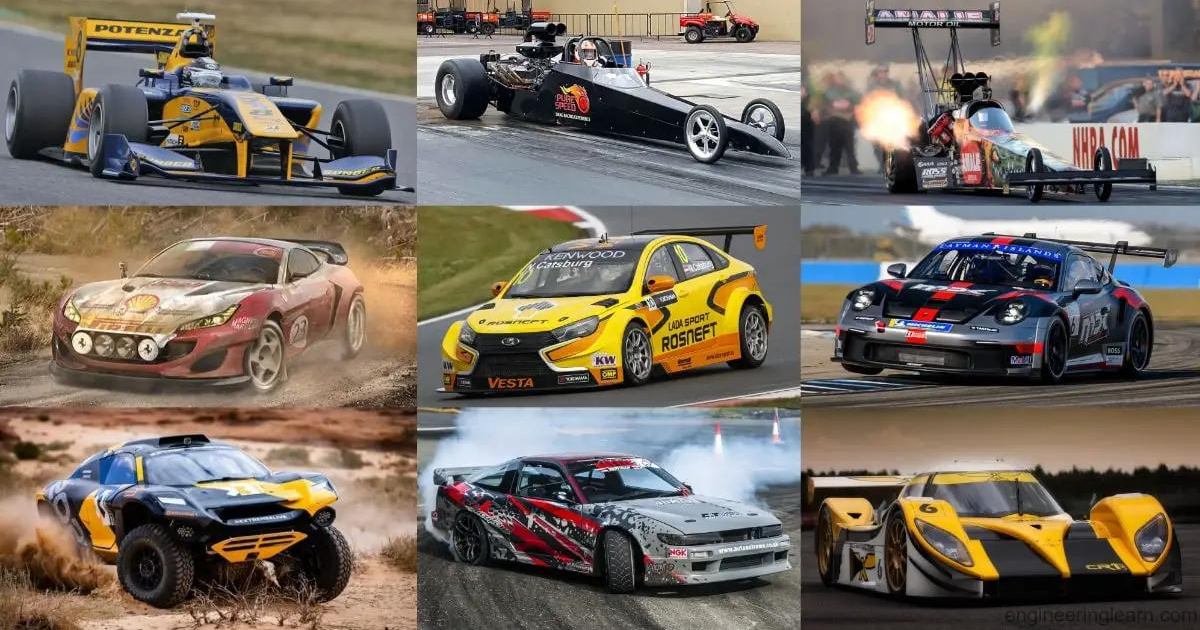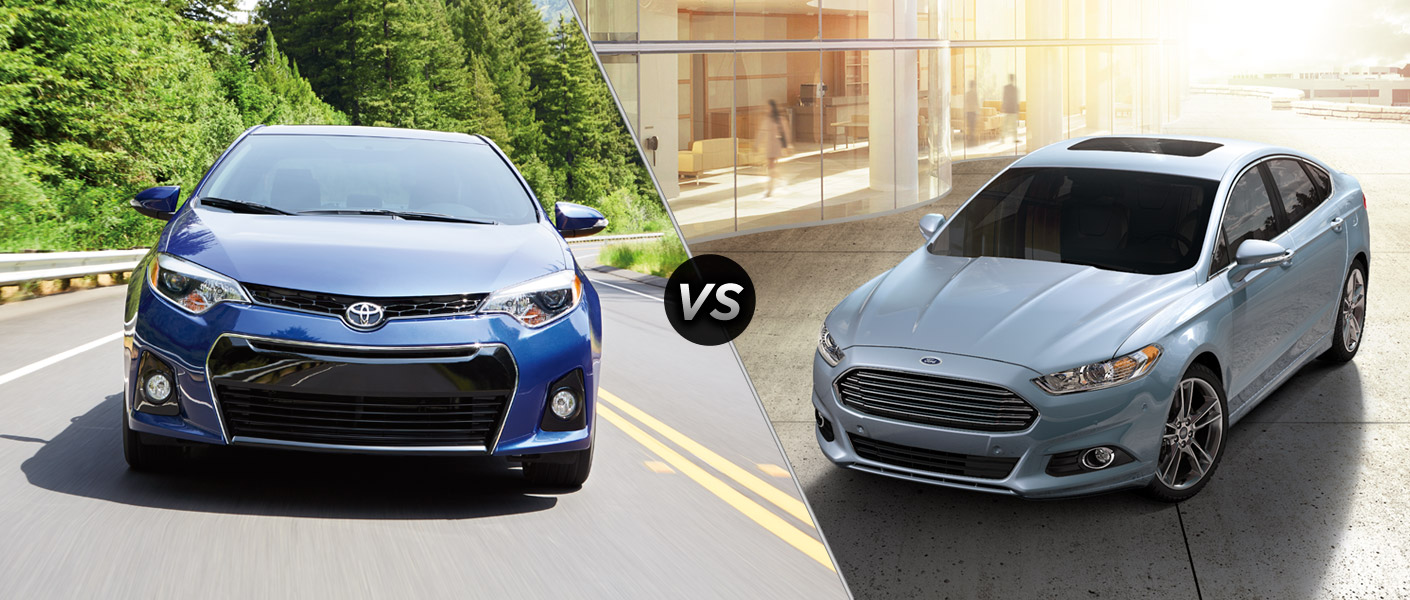
Formula 1 has been the hallmark of motorsport for over 70 years. Since its inaugural season in 1950, the world’s best racing drivers have aspired to be Formula 1 drivers. Few have been fortunate enough to have driven what are now regarded as some of the greatest Formula 1 cars ever made.
Successful drivers who have climbed into some of the finest racing cars in motorsport history include Schumacher, Ascari Senna, Prost, Hamilton, and Verstappen. With names like Ferrari, McLaren, Mercedes, and Red Bull among the manufacturers represented, these are the top ten Formula 1 cars of all time.
10. McLaren MP4/2
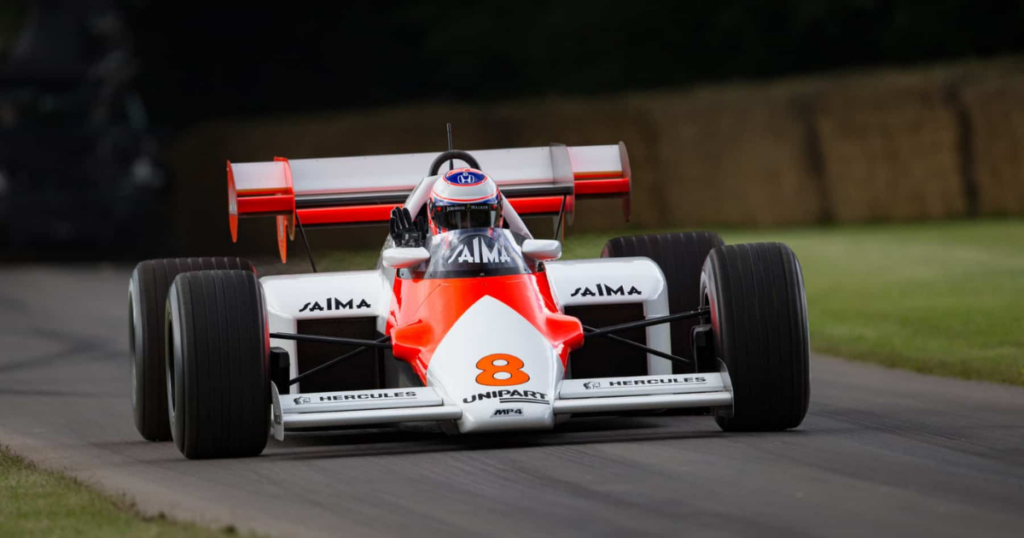
Even though John Barnard went on to design some truly remarkable Ferrari machinery, the McLaren MP4/2 is arguably his greatest creation. In 1984, the MP4/2 won its first race. It went on to win 11 more races that season, six more the next year, and two more in 1986. It earned two constructors’ championships, Niki Lauda’s third and last drivers’ championship, and two more championships for Alain Prost on the way.
After the MP4/1’s unique all-carbon chassis, the MP4/2 added a Porsche engine with the TAG logo. Surprisingly, the MP4/2 wasn’t very goo d in qualifying trim. This was mostly because McLaren, who paid for their own engines, wouldn’t run special qualifying motors while the other teams did.
For qualifying, teams like Brabham were using BMW engines that didn’t last long, with the boost turned up to over 1,500 PS (1,100 kW). However, the McLaren was the vehicle to beat on race day. McLaren’s massive Malboro-liveried beast wouldn’t go down until Williams showed up with Honda power in 1986, and even then, the MP4/2 won the drivers’ championship once more because of Prost’s endurance.
9. Lotus 72
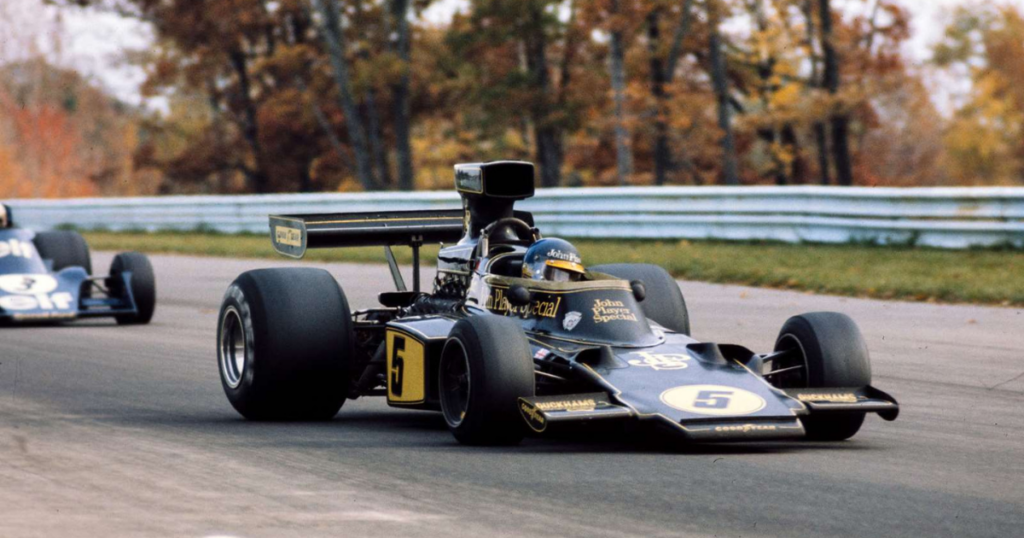
Twenty wins out of 75 races doesn’t seem all that impressive in the current company. However, the Lotus 72 has a secret weapon. Its 20 victories were distributed over five seasons, not just one, and it won three Constructors’ Championships and two Drivers’ Championships in six racing seasons.
As it debuted, the 72 was revolutionary, with inboard brakes, side-mounted radiators, and an overhead air intake; it was arguably Colin Chapman’s finest work. The cigar-shaped Formula 1 cars that came before them were replaced by wedge-shaped cars. It debuted in the midst of the 1970 season, and after Jochen Rindt retired from the first race on it, he went on to win four races in a row.
Rindt was tragically killed in a crash at Monza, but he and the 72 had already established themselves as strong contenders, and he was awarded the title after his death. In the penultimate race of the season, Emerson Fittipaldi won the vehicle for the fifth time, offering a fitting tribute to Rindt.
In comparison, 1971 was a fallow year. The vehicle was upgraded from the 72C to the 72D, with the famous John Player Special paint job. Fittipaldi won the championship and five races in 1972. In 1973, he won three more, Ronnie Petersen won four more, and Lotus won the constructors’ championship. Petersen won three more races with the 72, which was now called the 72E, in 1974.
The car had a rough year in 1975, though, while the 77 was being made for Lotus’s next F1 change. The Lotus 72 has been incredibly successful for a very long time. It is the F1 chassis with the longest winning streak between its first and last victory.
8. Alfa Romeo 158/9 Alfetta
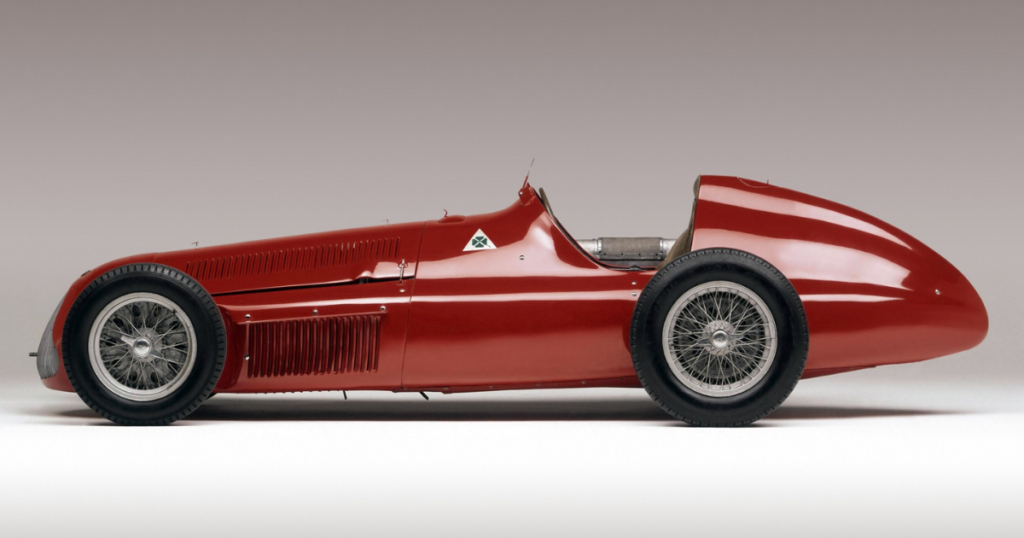
Originally intended for voiturette racing, the Alfa Romeo 158 was constructed in 1937—roughly 13 years before Formula One was founded. Before WWII, Alfa Romeo competed in many grand prix with a tiny, supercharged 1.5-litre straight-eight engine created by Ferrari V12 legend Giacchino Colombo. However, the ‘Alfetta’ was a dominant performer before its 1950 F1 debut. It finished 37 out of 41 races before the war broke out.
Auto racing returned in 1947, and the Alfetta returned with a more powerful straight-eight engine. Now producing over 350 PS (261 kW). When it made its F1 debut in 1950, the vehicle was world-class. The Alfa Romeo 158 drivers, Guiseppe Farina, Juan Manuel Fangio, Luigi Fagioli, and Reg Parnell, made up the front row of the grid. The chequered flag brought Farina, Fagioli, and Parnell to the podium.
Alfa Romeo dominated the rest of the season, winning all six races. The Alfetta almost beat every other F1 car that ever raced; the only reason it’s not the record holder is that it didn’t compete in every race that season. It “only” won 85% of the races in the 1950 season because it did not participate in the Indianapolis 500.
It speaks volumes that it was still excellent in 1951. Juan Manuel Fangio won three races and the first of his five F1 drivers’ titles, due to a fine-tuned 420 PS (313 kW) engine with larger superchargers.
7. Red Bull RB9
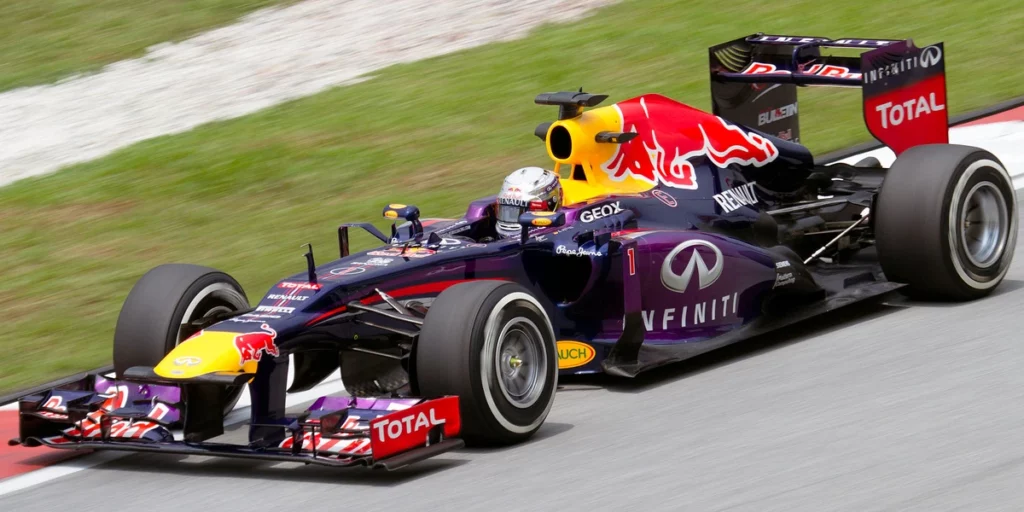
When was the last time Red Bull mocked the term “competition”? Was it truly more than ten years ago? It seems like a long time ago. Sebastian Vettel and Red Bull ravaged 2010–2013, but their power partnership peaked in the second half. Fernando Alonso may have won the World Championship in 2012 and 2010 if he had passed Vitaly Petrov at the last race.
The Red Bull RB9 dominated the competition like never before. After a slow start, Sebastian Vettel and Alonso exchanged wins, but something snapped in the second half of the season, and Vettel went on a rampage. An amazing nine-win streak stunned Ferrari and the rest in a relentless burst victory we thought we’d never see again.
The RB9’s potential for improvement makes it even more remarkable. Adrian Newey later revealed that the 2012 title fight had delayed the development of the RB9, which was powered by a Renault engine that was just OK compared to Ferrari and Mercedes.
Red Bull spent more time on the RB8 than expected; hence, the RB9 was underdeveloped. After breaking F1 records, you wonder how fast it would have been with a full development program. It’s a scary thought.
6. Mercedes W07 Hybrid

Mercedes has accomplished incredible things in the second hybrid era of the F1 championship. They even outperform Ferrari’s performance from the early 2000s blitz. While it didn’t dominate a season like McLaren’s MP4/4 in 1988, the Silver Arrows’ durability of success has set them apart in Formula 1. One car was so far ahead of the competition that it deserves a spot on this list.
This particular vehicle is the W07, which Nico Rosberg drove to victory in 2016. But considering that Lewis Hamilton won ten races and Rosberg won nine, you get an idea of how good this car was. It was a record 19 wins, 765 points, 33 podiums, and 20 poles in a single F1 season.
Mercedes had a deep understanding of 1.6-litre V6 rules, and the W07’s PU106C engine was top-notch. Mercedes experimented with its design with such a power advantage, and the W07 was the fastest in a straight line and best in turns.
5. Ferrari 500
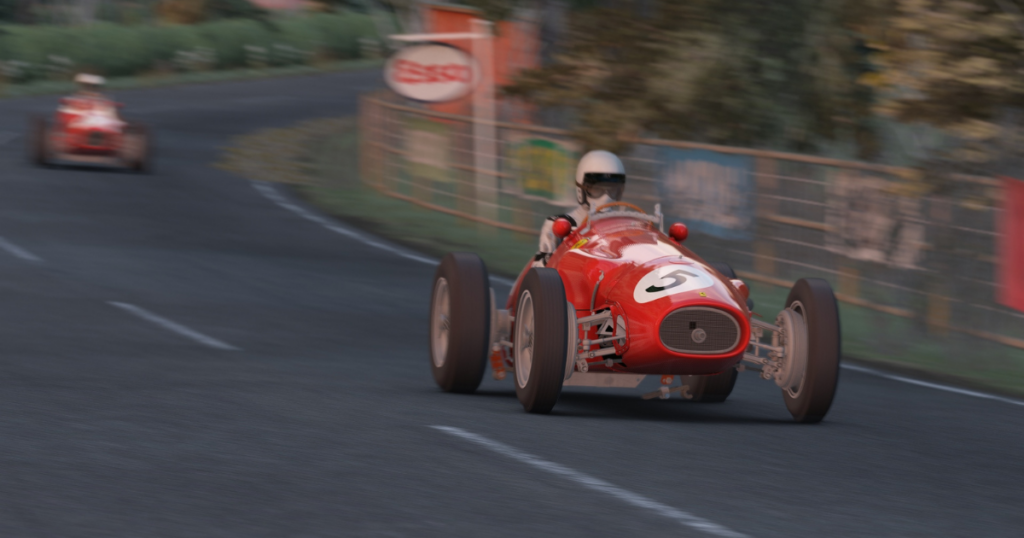
When Alfa’s financing dried up and it had to abandon its 160 development and leave Formula One, the top spot in the sport became vacant. Step up, Ferrari. The 1952 season was conducted under Formula 2 rules due to a shortage of Formula 1 vehicles, with Ferrari being the only manufacturer to produce a car specifically designed to meet those rules.
It was the Ferrari 500, and it was acknowledged as the best in its class very soon. When it came out, it won every race it competed in. Piero Taruffi drove it to victory at the Swiss Grand Prix, and that was the first race of its seven-race winning streak, which held until Sebastian Vettel beat it in 2013.
Ascari won the championships in 1952 and 1953 with the Ferrari 500, which nearly went unbeaten for two straight seasons until being beaten in the final round of the 1953 season by Fangio in his Maserati.
4. Williams FW14B
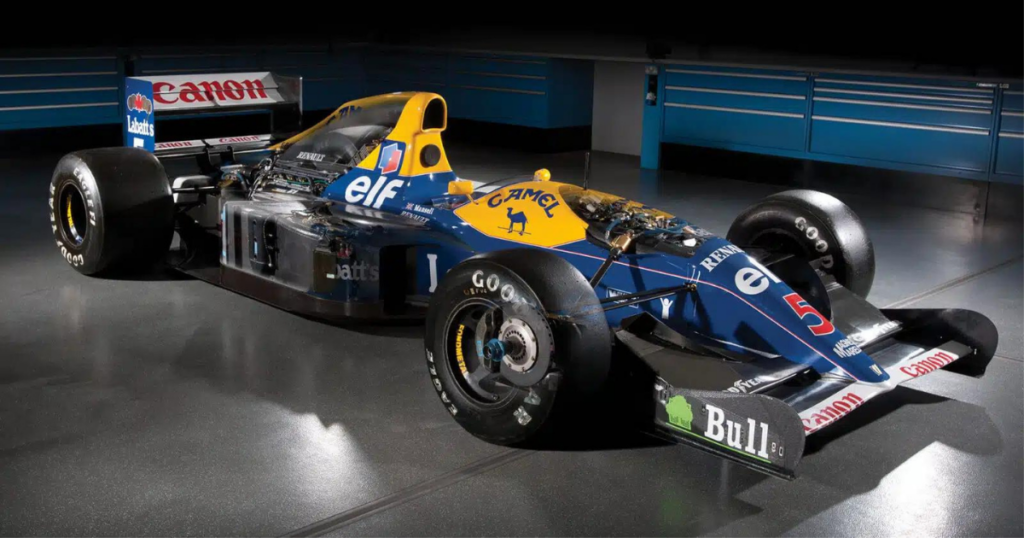
The Williams FW14 made its 1991 debut as a technological marvel so far ahead of its competitors that you would find it hilarious. Although teething issues prevented it from winning the title, Adrian Newey’s first legendary F1 design won seven races and finished second in the championship.
Many forget that Nigel Mansell won only two races in his rookie season, and his lack of title contention was primarily due to early-season problems that saw the FW14 retire six times in four races.
Many reliability concerns emerged from a problematic semi-automatic gearbox, which was fixed in 1992. New traction control systems and modified active suspension make this ‘B’ spec car even more monster, even though the only modification was a few protrusions by the front suspension pushrods, which hold some active suspension components.
This new FW14B couldn’t stop Mansell, who had been waiting so long for another chance to fight for the title that he had already quit F1 once. Mansell set a record by winning the first five races in a row, something that Michael Schumacher had only once done in 2004. He went on to win a season-high nine races. It also qualified on pole for all but one race in 1992, and it added 11 more fastest laps.
3. Ferrari F2002
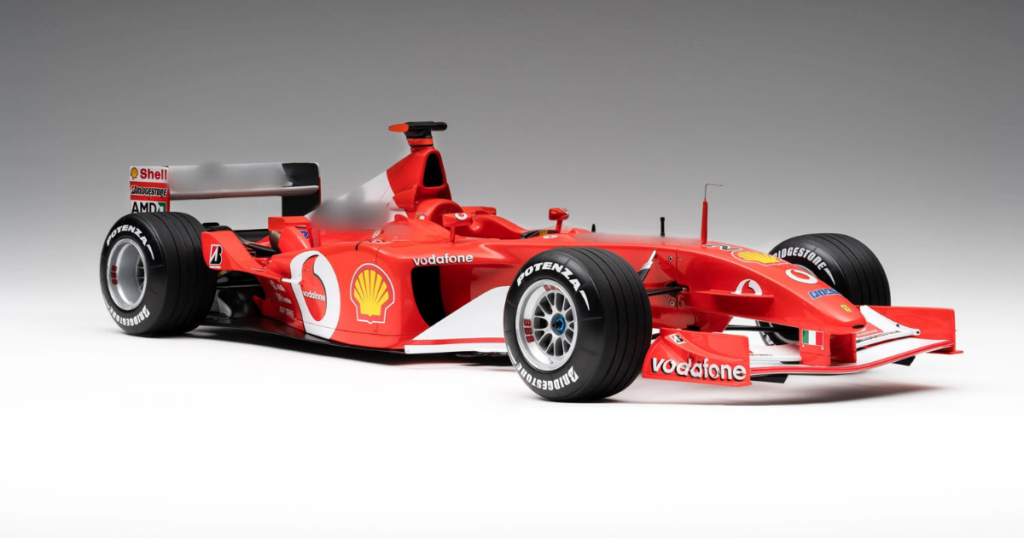
Here we are again, trying to separate greatness from greatness. The 2000–2004 Ferrari period is another that can only be classified as such. However, one vehicle in particular sticks out from the others. It may be the F2004, which won 15 races in 18 years, including 12 of the first 13 rounds of the 2004 season, in a demoralising canter to the championship. Rather, we picked the F2002 since it dominated the competition.
Ferrari was so dominant at this point in the season that the F2002 wasn’t even unveiled until the third race. It didn’t have to; the F2001 from the previous season prevailed in Australia by a significant margin. After the latest car eventually made it to the grid, the remainder of the field probably wanted to give up right then and there.
Schumacher finished no lower than second in every race after the Brazilian Grand Prix, with his teammate Barrichello winning on all but one occasion. The BMW-powered Williams vehicles were more powerful than the F2002’s 3.0-litre V10, but it had the best handling.
It had a clutchless gearbox so compact that creator Rory Byrne could customize the rear. The F2002 was so dominant that it won the Constructors Championship with almost three times as many points as Williams, the runner-up.
2. McLaren-Honda MP4/4
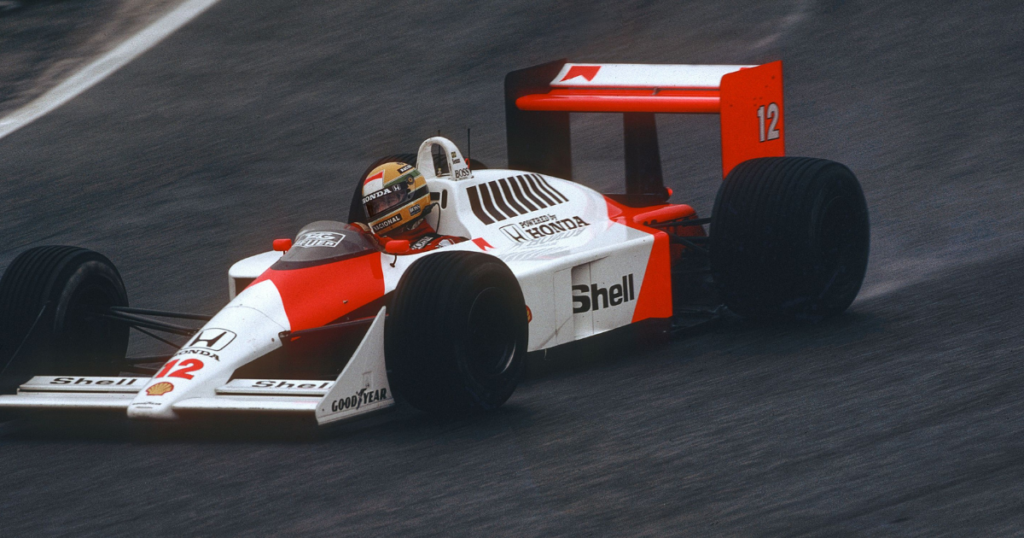
Based on statistics, the McLaren MP4/4 is currently the greatest Formula One vehicle ever made. Alain Prost and Ayrton Senna won 15 of 16 races in 1988 with the MP4/4, only missing the set at the Italian Grand Prix due to Senna’s crash with Jean-Louis Schlesser. McLaren had to accept Ferrari’s success a month after Enzo Ferrari’s death.
The MP4/4 car was designed by Gordon Murray, Technical Director, and Steve Nichols. It was powered by a stronger Honda engine that was taken from competitor Williams for the 1988 season. Their creation was much superior to all others, making it one of the most powerful Formula One vehicles in history.
The MP4/4 dominated throughout the season at a level never seen before or since, even after the sad incident at Monza. It has a 93.8 percent victory percentage and 10 one-two finishes overall. Senna won eight races, while Prost won seven, and the Brazilian won his first of three Formula One world titles.
1. Red Bull RB19

We can’t ignore Red Bull’s incredible candidate for this list. When we look back in 20, 30, or even 40 years, we might still consider the RB19 to be the most dominant single-seater in Formula One history. This is already the greatest single-car, single-driver spectacle in history.
With the exception of one strange glitch in Singapore, Max Verstappen in the RB19 has shown himself to be completely unbeatable. The car has already broken two records: first, for Red Bull, with its 14 race wins in a row (including three Sprint victories), and second, for Verstappen, who set a new record with his ten consecutive victories. It’s also on track to break the previous points record.
The way they win matters more than simply the victories. The RB19 has completely destroyed the field. Verstappen’s lead over his closest non-Red Bull competitor has been constant throughout, ranging from twenty to thirty seconds. It will be interesting to see how far this car can go in the future.
Conclusion
Dominant cars have come before it, and there will be more. In this article, we have discussed the 10 most dominant F1 cars of all time. It does, however, imply that there are a few notable exclusions. The revolutionary Williams cars of the 1990s and the 1963 Lotus that won Jim Clark his first title after Colin Chapman made the first fully stressed monocoque chassis are not included. Let’s see what these insanely powerful cars have in store for the future.


